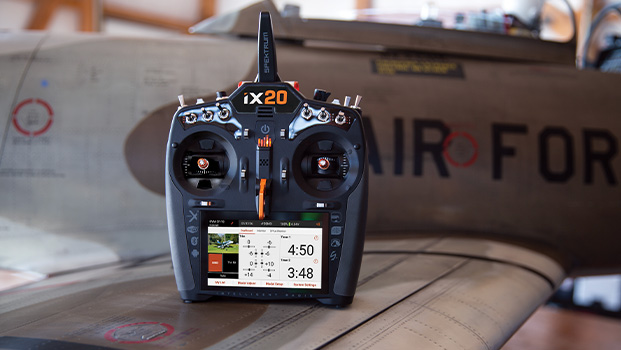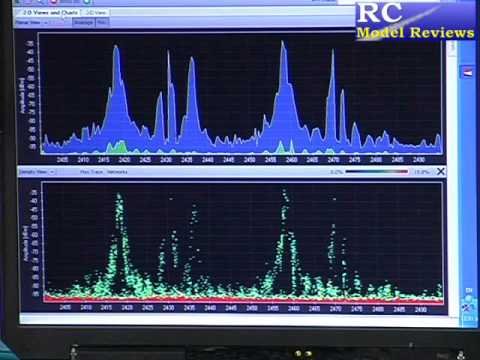When it comes to radio control systems, DSMX and DSM2 are popular choices. Both offer unique features for RC enthusiasts.
Comparing DSMX and DSM2 helps you understand which system suits your needs. Whether you’re a seasoned pilot or a beginner, knowing the differences can make a big difference. DSMX is newer and boasts advanced technology. DSM2, on the other hand, has been around longer and is known for its reliability.
This comparison will explore the strengths and weaknesses of each. By the end, you’ll have a clearer picture of which system will enhance your RC experience. Let’s dive into the details and see what each has to offer.
Introduction To Rc Systems
DSMx and DSM2 are protocols used in RC systems for communication between transmitters and receivers. DSMx offers improved signal stability and interference resistance compared to DSM2, making it a preferred choice for many hobbyists. Both systems provide reliable performance, but DSMx is often favored for its advanced technology.
Radio control (RC) systems have revolutionized the way we interact with model vehicles. From airplanes to cars and boats, these systems offer precise control and endless fun. Understanding the basics of RC systems is crucial for anyone interested in the hobby. Let’s delve into the world of RC systems.Brief History Of Rc Systems
RC systems have come a long way since their inception. The first RC models appeared in the 1960s. They used simple AM radio frequencies. Over the decades, technology advanced rapidly. By the 1980s, FM systems became the norm. These offered better range and reliability. The 2000s saw the introduction of 2.4 GHz systems. These systems revolutionized the hobby. They reduced interference and improved performance.Importance Of Choosing The Right System
Choosing the right RC system is vital. It can impact your experience significantly. A good system ensures reliable communication. It offers better control and range. DSMX and DSM2 are two popular options. DSMX is known for its frequency agility. DSM2 offers simple binding and operation. Understanding their differences helps in making an informed choice. Making the right decision enhances your RC experience and enjoyment. “`
Credit: micronwings.com
Basics Of Dsmx
DSMX offers improved signal stability compared to DSM2. It also reduces interference for RC models. This makes it a preferred choice.
### Basics of DSMXIf you’re into RC (Radio Control) flying or even just curious about it, you’ve probably heard about DSMX and DSM2. DSMX is the newer technology, and understanding its basics can help you make an informed choice.####What Is Dsmx?
DSMX is a modulation technology used in RC systems for transmitting signals between the transmitter and the receiver.Unlike DSM2, which uses two fixed frequencies, DSMX employs frequency hopping spread spectrum (FHSS). This means that DSMX constantly changes frequencies to avoid interference.I remember upgrading my transmitter to DSMX. The difference in signal reliability was immediately noticeable. Have you ever struggled with signal loss during a flight? DSMX could be your solution.####Key Features Of Dsmx
One of the standout features of DSMX is its enhanced interference resistance.By hopping between 23 frequencies, DSMX significantly reduces the risk of signal loss.Another key feature is backward compatibility. If you have DSM2 receivers, DSMX transmitters can still work with them.I found this particularly useful when I didn’t want to replace my entire setup.Imagine flying your drone without worrying about signal drop. DSMX makes it possible.So, what do you think? Ready to upgrade to DSMX for a smoother RC experience?Basics Of Dsm2
DSM2 is an older protocol for RC systems, offering basic reliability. DSMX, on the other hand, provides enhanced interference resistance and better performance. Understanding these differences helps in choosing the right system for your needs.
The world of radio control technology can be confusing, especially when you’re trying to understand the basics of DSM2. This system is crucial for anyone who is serious about RC hobby, as it can impact the performance of your models. Let’s break down the essentials of DSM2 technology and how it can benefit your RC experience.What Is Dsm2?
DSM2 stands for Digital Spectrum Modulation 2. It’s a technology developed by Spektrum RC for radio control systems. DSM2 operates on the 2.4GHz frequency band, which is less crowded compared to other frequencies.DSM2 ensures a strong and reliable connection between your transmitter and receiver. This reduces the chances of signal interference, providing a smoother control experience.Are you curious about how DSM2 can enhance your RC models’ performance?Key Features Of Dsm2
DSM2 technology boasts several key features that make it a preferred choice for RC enthusiasts:– Reduced Interference: DSM2 uses direct-sequence spread spectrum, minimizing signal interference from other devices. – High Response Rate: It offers a fast response rate, ensuring immediate reactions from your RC model. – Enhanced Range: DSM2 provides a more extensive range, giving you better control over longer distances.These features ensure that your RC model performs reliably and accurately. Imagine flying your RC plane without worrying about losing control due to signal issues!Do you want to experience a more stable and responsive RC hobby? DSM2 could be the game-changer you need.By understanding DSM2, you can make informed decisions about your radio control technology, ensuring you get the best out of your RC models.
Credit: www.youtube.com
Performance Comparison
Dsmx offers better signal stability and faster response times compared to Dsm2. It also provides improved interference resistance, enhancing overall performance.
When choosing between DSMX and DSM2 for your RC aircraft, performance is key. Understanding how each system stacks up in crucial aspects can guide your decision. Here, we’ll compare DSMX and DSM2 on two important fronts: signal range and strength, and interference resistance.Signal Range And Strength
Signal range determines how far you can control your RC aircraft before losing connection. DSMX generally offers a more reliable range compared to DSM2. I’ve flown my DSMX-equipped drone over vast fields without worrying about signal drops.DSMX’s ability to hop between frequencies enhances signal strength. It quickly switches to the best available frequency, ensuring a consistent connection. DSM2, while effective, sticks to two frequencies, which may not always guarantee optimal performance.If you fly in areas with obstacles like trees or buildings, DSMX’s robust signal strength ensures your aircraft stays responsive. DSM2 can sometimes struggle in such environments.Interference Resistance
Interference from other devices can be a nightmare. DSMX shines in this area with its advanced frequency hopping. It continuously scans and jumps to the clearest frequency, reducing the risk of signal interference.On the other hand, DSM2 uses dual frequencies but lacks the dynamic hopping feature. This makes it more susceptible to interference, especially in crowded environments like parks or events.Imagine flying at a busy airfield with several other pilots. With DSMX, your aircraft is less likely to experience interference from others. DSM2 might not offer the same peace of mind.Have you ever experienced interference issues with your RC setup? Share your thoughts in the comments!In summary, if you prioritize signal range, strength, and interference resistance, DSMX is a solid choice. While DSM2 is reliable, DSMX provides an extra layer of performance that many pilots find valuable.Compatibility And Usability
DSMX offers improved signal reliability and reduced interference compared to DSM2. DSMX is more suitable for crowded environments. DSM2 may still be adequate for less crowded areas.
### Compatibility and UsabilityChoosing between DSMX and DSM2 can be tricky. They both offer unique features that cater to different needs. Let’s break down their compatibility and usability to help you make an informed decision.###Receiver Compatibility
Compatibility is crucial when selecting a transmitter. DSMX receivers are generally backward compatible with DSM2 transmitters. This flexibility means you can upgrade your transmitter without replacing all your receivers.On the other hand, DSM2 receivers are not forward compatible with DSMX transmitters. If you plan to upgrade your system in the future, DSMX might be the better choice.I once tried to connect a DSM2 receiver to my new DSMX transmitter and realized it wouldn’t work. It was frustrating and costly. Learning from my mistake, I now recommend checking compatibility before making a purchase.###User Experience
User experience varies between DSMX and DSM2. DSMX offers more robust signal processing. This leads to fewer interruptions and a more reliable connection. If you’re flying in an area with many signals, DSMX can give you peace of mind.DSMX also auto-selects the best frequency, which simplifies setup. You don’t have to worry about interference or manually selecting channels. This makes it user-friendly, even for beginners.In contrast, DSM2 operates on a fixed frequency. This can be limiting in crowded areas. If you’re in a less congested environment, DSM2 should suffice.Think about your typical flying conditions. Do you fly in crowded areas? If yes, DSMX offers a smoother experience. If not, DSM2 is still a reliable and cost-effective option.So, which system aligns better with your needs?Applications And Use Cases
Dsmx offers improved signal stability for RC models compared to Dsm2. Dsmx is ideal for busy environments where interference is common. Dsm2 is suited for simpler, less crowded spaces.
When deciding between DSMX and DSM2, understanding their applications and use cases can help you make an informed choice. These technologies, pivotal in the RC (Radio Control) world, serve various purposes depending on the user’s needs. Whether you’re a hobbyist or a professional, knowing where each excels can guide your decision.Hobbyist Applications
As a hobbyist, you might be flying drones or RC planes in your spare time. DSMX offers a significant advantage due to its frequency agility. This means if you fly in crowded spaces, DSMX can switch frequencies to avoid interference.Imagine you’re at a popular flying field. The last thing you want is interference causing your plane to crash. DSM2, while reliable, operates on a fixed frequency, making it less adaptable in such environments.For those who enjoy customizing their RC models, DSMX provides a more stable connection. If you’re tweaking your drone’s components, the robust signal helps maintain control. This is crucial during test flights.Professional Applications
Professionals, such as commercial drone operators or filmmakers, demand reliability and precision. DSMX’s frequency agility is a game-changer here. In high-stakes scenarios, losing control is not an option.Imagine you’re capturing footage for a client. DSMX ensures your drone maintains a strong signal amidst potential interference. This reliability translates to smooth operations and high-quality results.In industrial applications, such as surveying or agriculture, DSMX’s adaptability is invaluable. It ensures your equipment performs consistently, even in challenging environments. This can significantly improve efficiency and data accuracy.Whether you’re a hobbyist or a professional, DSMX and DSM2 offer unique advantages. Your specific needs will determine which is the better fit. Which features matter most to you?Cost And Value
When choosing between DSMX and DSM2, understanding the cost and value is crucial. Both systems offer unique advantages, but their cost and long-term value can influence your decision significantly.
Initial Investment
DSMX systems often come with a higher price tag than DSM2. The advanced technology and features in DSMX contribute to this cost. On the other hand, DSM2 systems are generally more affordable. Their simpler technology makes them a budget-friendly option. This lower initial cost can be appealing for beginners or hobbyists.
Long-term Value
Despite the higher initial cost, DSMX offers better long-term value. The enhanced signal reliability and less interference can save money in the long run. Fewer crashes and better performance mean fewer repairs and replacements. DSM2, while cheaper upfront, may lead to higher costs over time. Interference and signal issues can cause crashes, leading to repairs.
Investing in DSMX might seem expensive initially. But the long-term savings and performance benefits can outweigh the initial cost. Weighing the initial investment against long-term value can help make an informed decision.

Credit: www.spektrumrc.com
Frequently Asked Questions
What Is The Difference Between Spektrum Dsm2 And Dsmx?
Spektrum DSM2 uses two frequencies to avoid interference. DSMX adds frequency agility, hopping across 23 channels for better signal reliability.
What Is The Difference Between Dsm2 And Dsmr?
DSM2 uses a frequency-hopping spread spectrum for signal transmission. Dsmr refers to a digital smart meter standard, often used in energy monitoring.
Is Dsmx Compatible With Dsm2?
Yes, DSMX is compatible with DSM2. DSMX receivers can work with DSM2 transmitters, ensuring backward compatibility.
What Does Dsm2 Mean?
DSM2 stands for Digital System Multiplex 2. It is a communication protocol used in radio control systems.
What Is The Difference Between Dsmx And Dsm2?
DSMX offers improved signal stability and reduced interference compared to DSM2.
Conclusion
Choosing between DSMX and DSM2 depends on your needs. DSMX offers better signal stability. DSM2 might suffice for simpler setups. Evaluate your requirements. Both systems have their strengths. Think about interference levels in your area. Consider future expansions and upgrades.
Always choose the one that suits you best. Happy flying!






